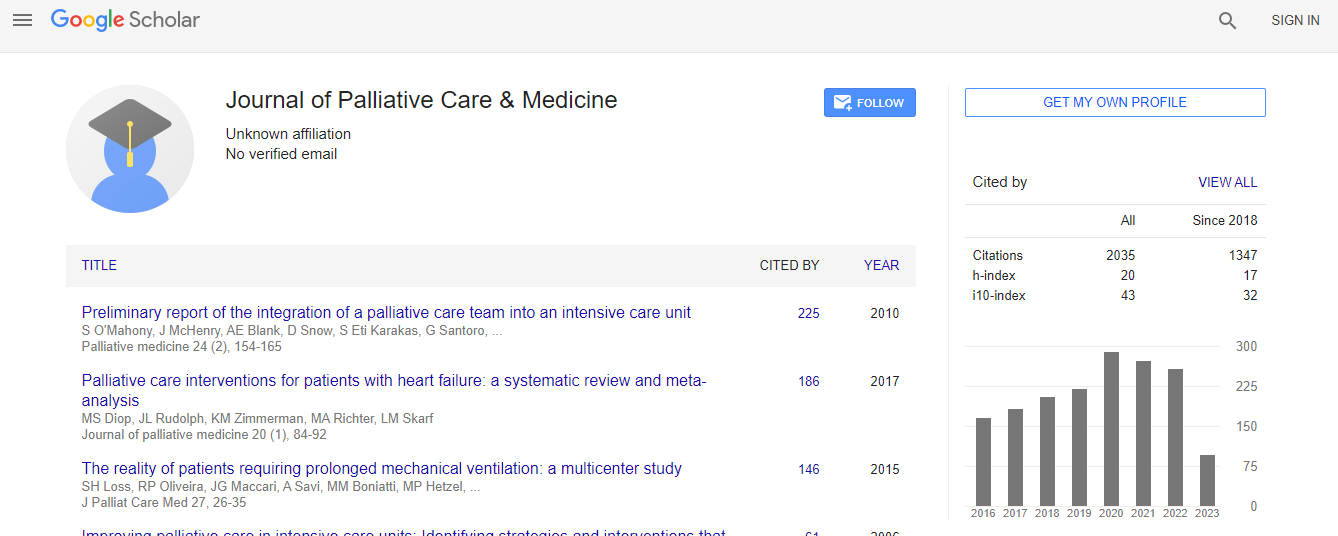End-of-Life Decision Making in the Context of Chronic Life-Limiting Disease
*Corresponding Author: Sarah King, Department of Palliative Nursing, Health Sciences (Y.T., M.M.), Tohoku University Graduate School of Medicine, Sendai, Miyagi, Japan, Email: king@newcastle.edu.auReceived Date: Dec 03, 2021 / Accepted Date: Dec 17, 2021 / Published Date: Dec 24, 2021
Citation: King S (2021) End-of-Life Decision Making in the Context of Chronic Life-Limiting Disease. J Palliat Care Med 11: 442.
Copyright: © 2021 King S. This is an open-access article distributed under the terms of the Creative Commons Attribution License, which permits unrestricted use, distribution, and reproduction in any medium, provided the original author and source are credited.
Abstract
Variability in practice, insufficient predictive models for death, elusive knowledge of patient preferences, poor communication between staff and surrogates, insufficient or absent training of health-care providers, the use of imprecise and insensitive terminology, and incomplete documentation in medical records were among the issues identified by the jurors. The research towards improving end-of-life care is performed. The verdict recommends a "shared" approach to end-of-life decision-making that includes caregivers and patient surrogates. Respect for the autonomy of the patient, as well as the desire to honor the patient's decision to refuse undesirable therapies, should be communicated to the family. The negotiating process will decide the conclusion, which will be influenced by the personalities and beliefs of the players. In the end, it is the Variability in practice, insufficient predictive models for death, elusive knowledge of patient preferences, poor communication between staff and surrogates, insufficient or absent training of health-care providers, the use of imprecise and insensitive terminology, and incomplete documentation in medical records were among the issues identified by the jurors. The research towards improving end-of-life care is performed. The verdict recommends a "shared" approach to end-of-life decision-making that includes caregivers and patient surrogates. The sufferer must be guaranteed a painless death. The Consensus Conference jury agrees with the moral and legal grounds prohibiting the administration of therapies intended to hasten death. The patient must be provided enough analgesia to relieve pain and anguish; if this analgesia hastens death, the "double impact" should not detract from the primary goal of providing comfort

 Spanish
Spanish  Chinese
Chinese  Russian
Russian  German
German  French
French  Japanese
Japanese  Portuguese
Portuguese  Hindi
Hindi 
